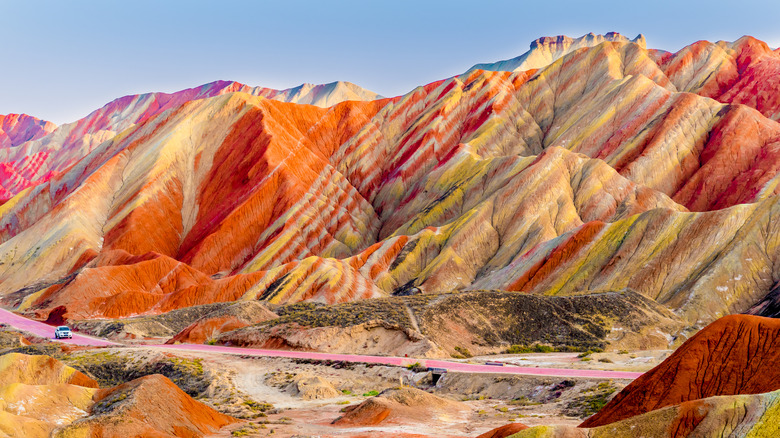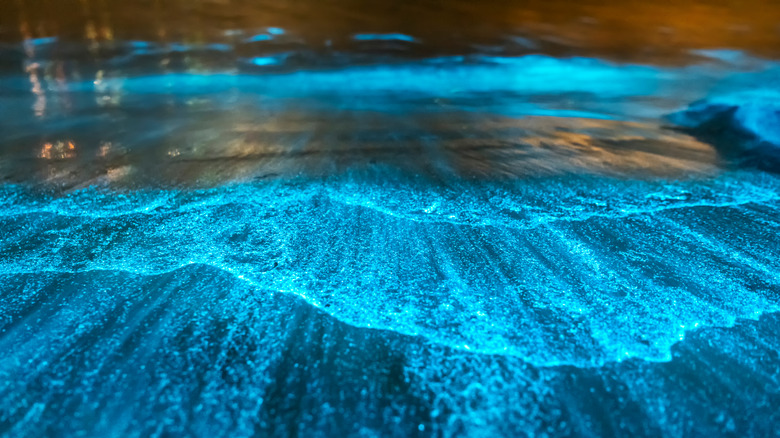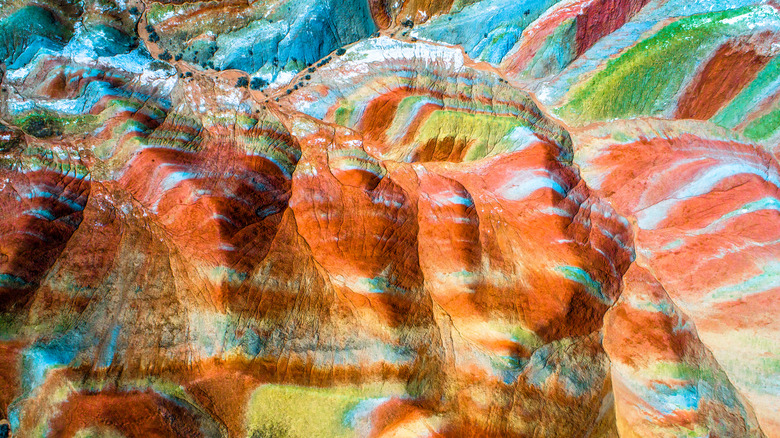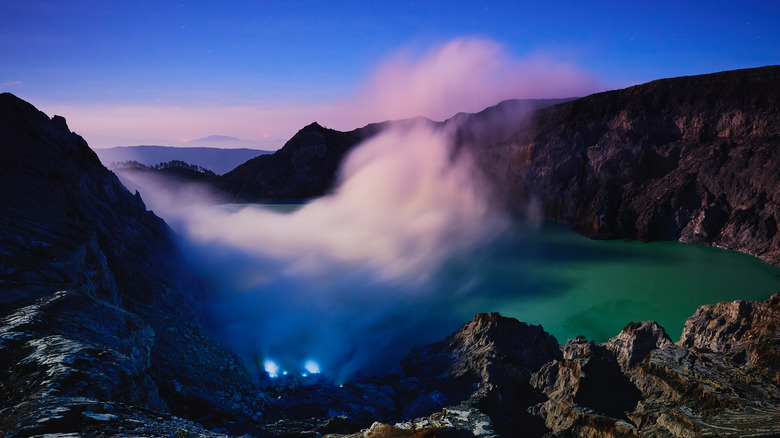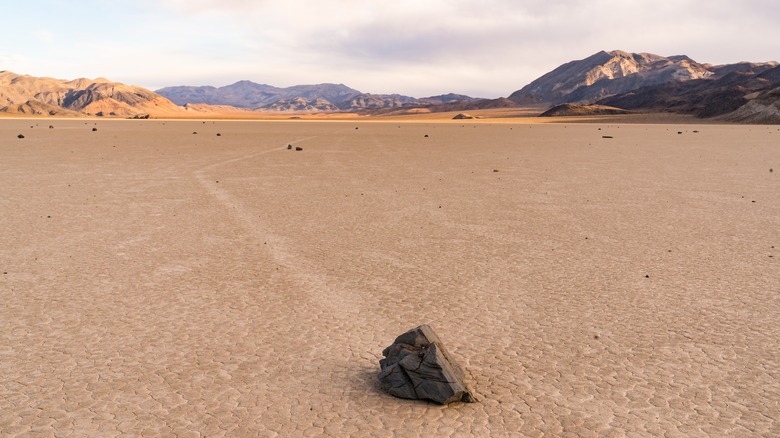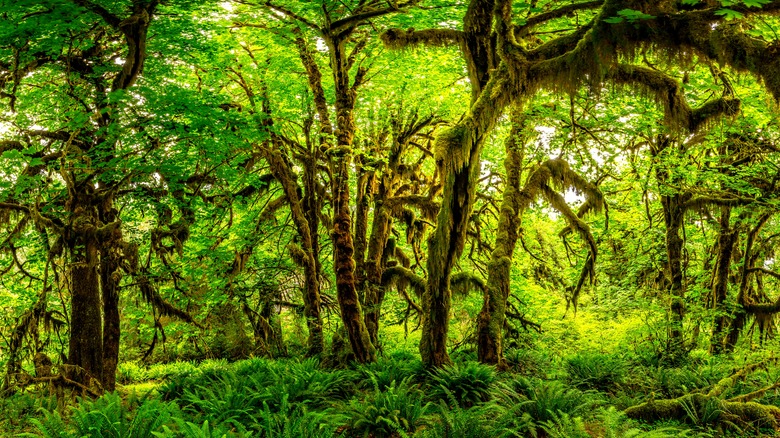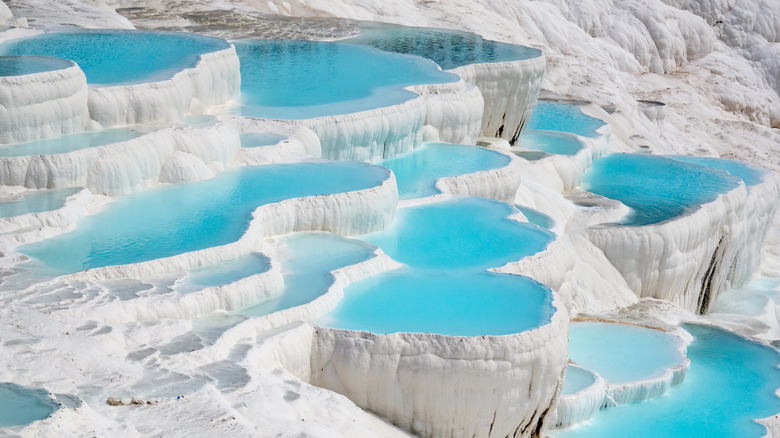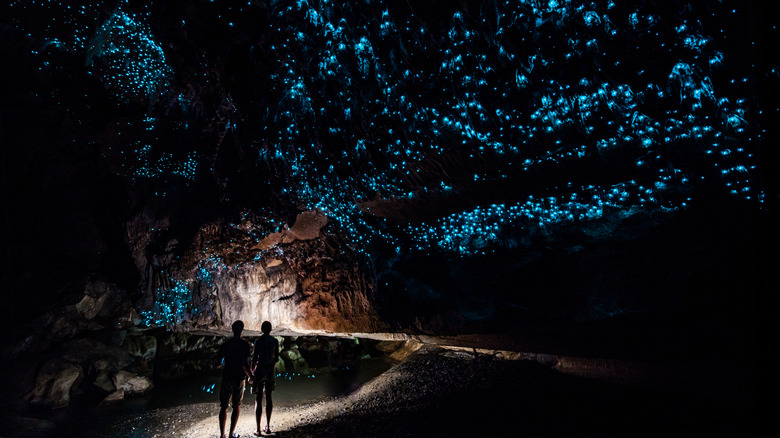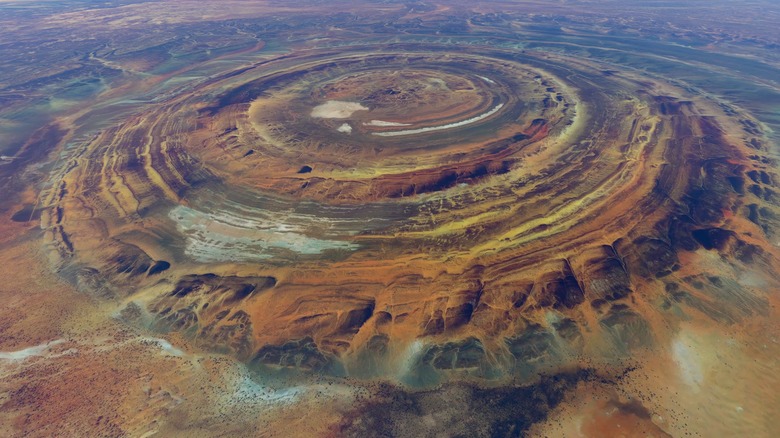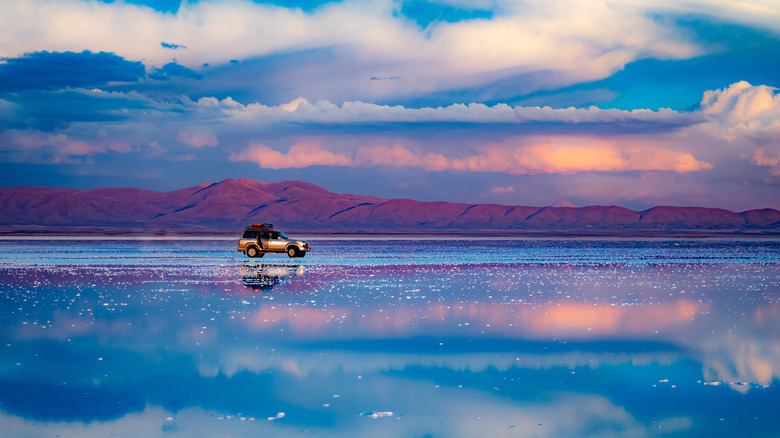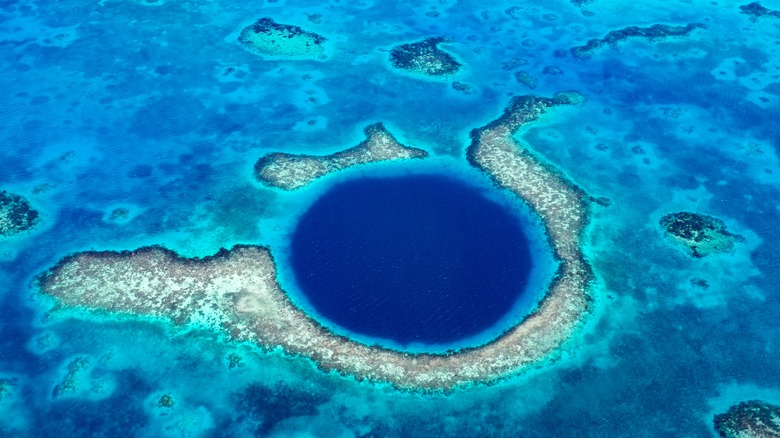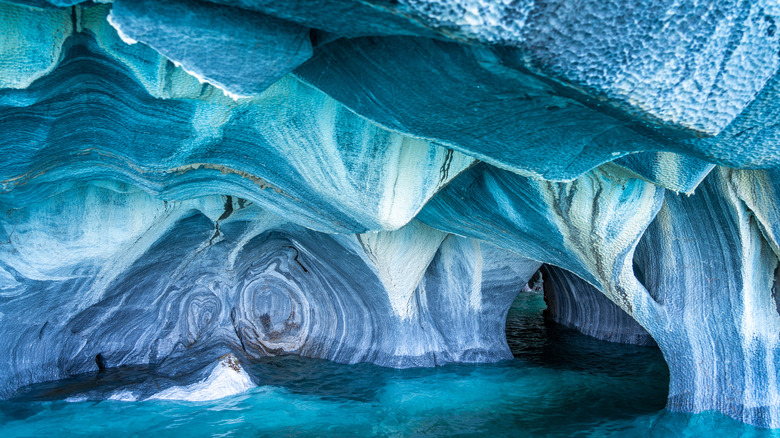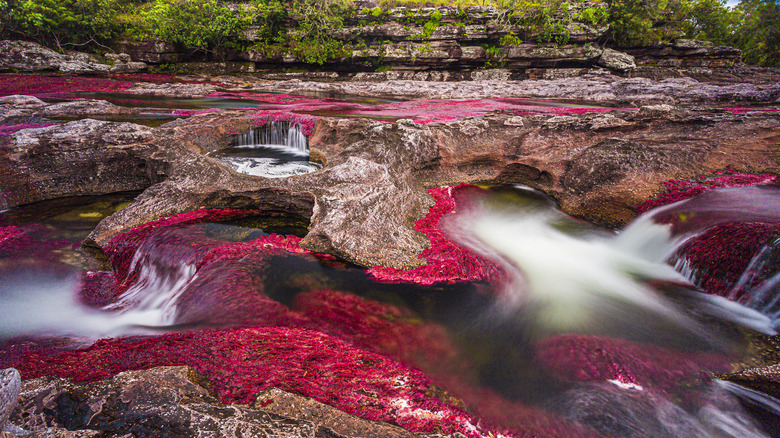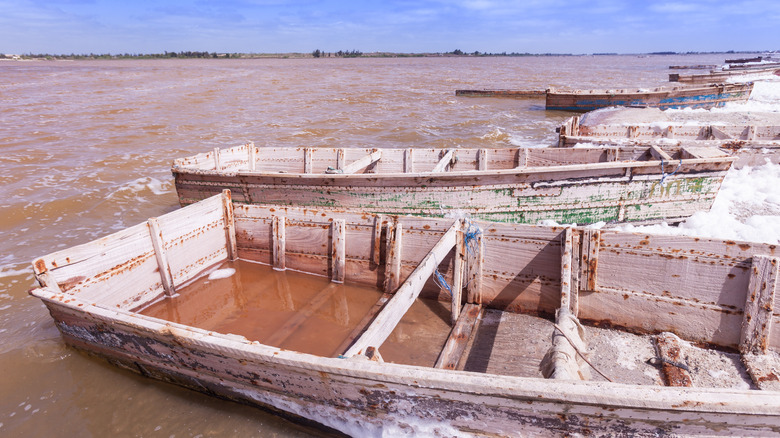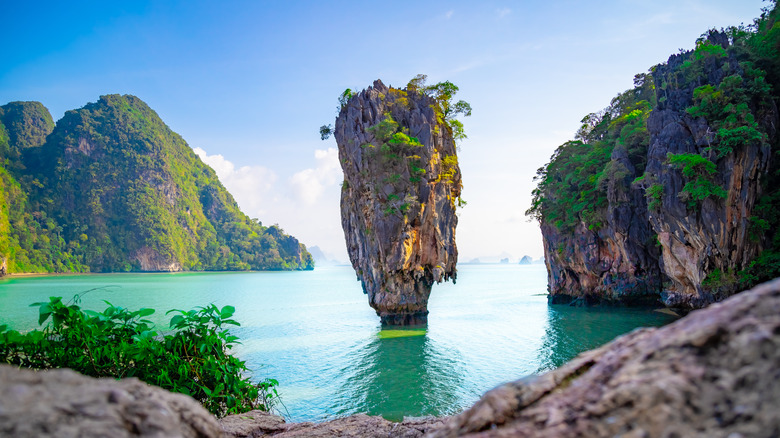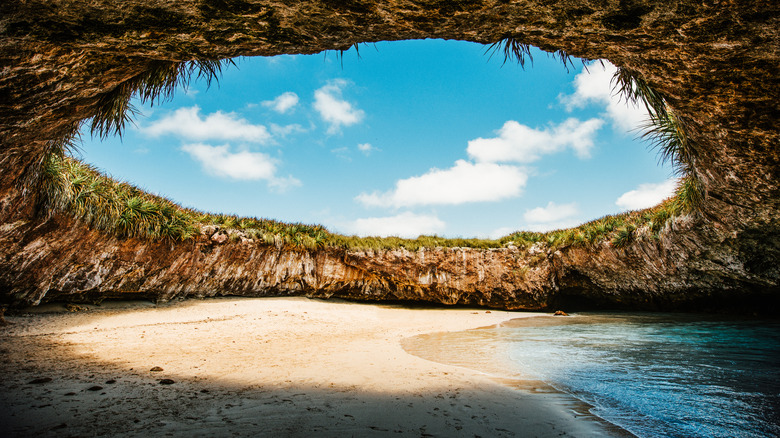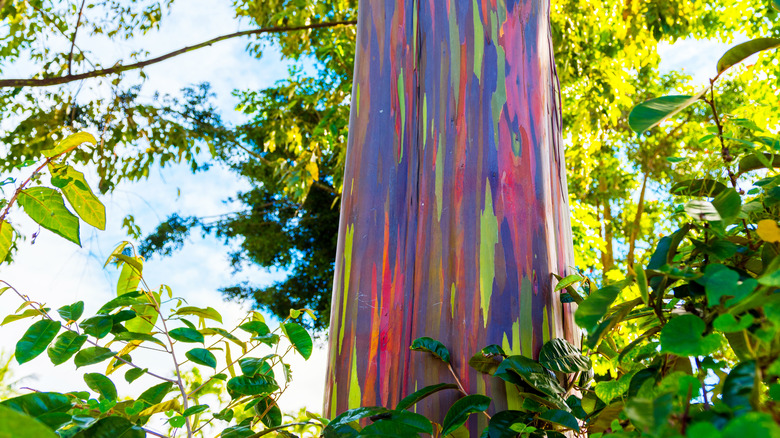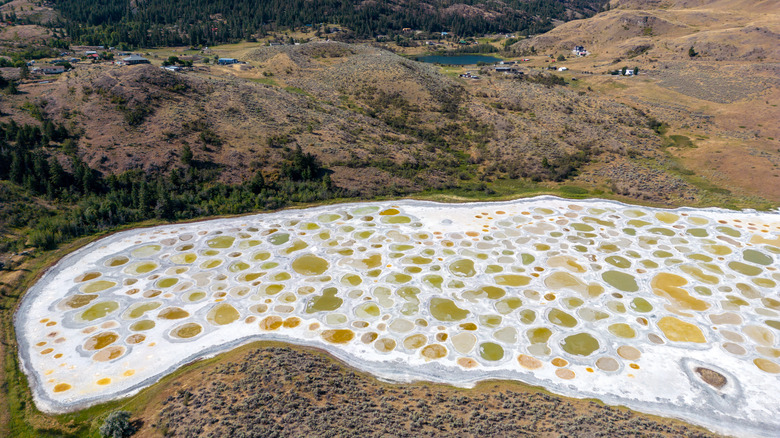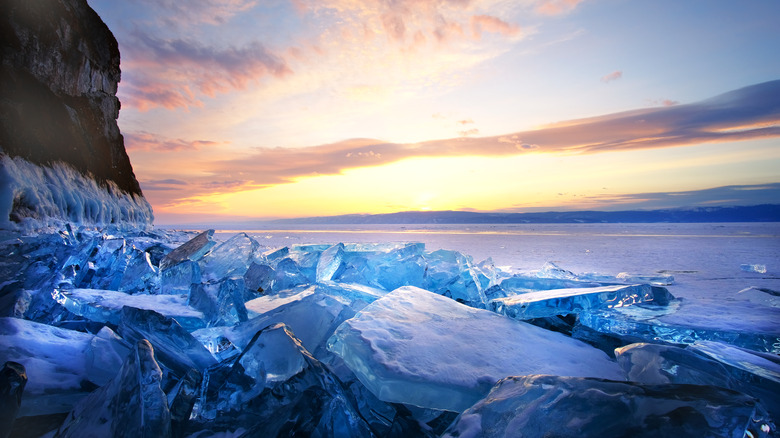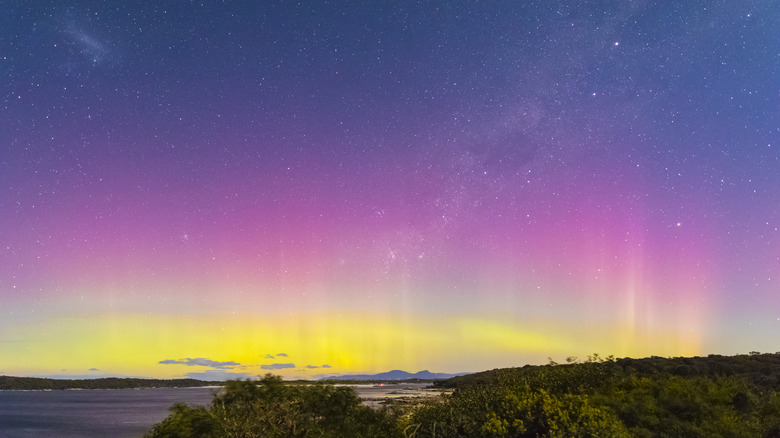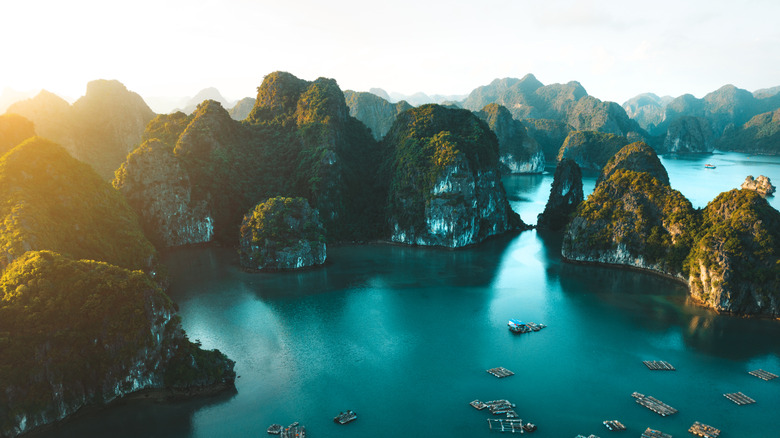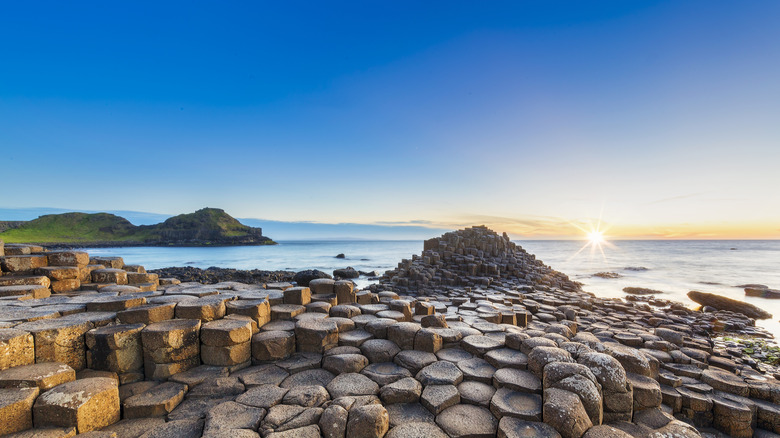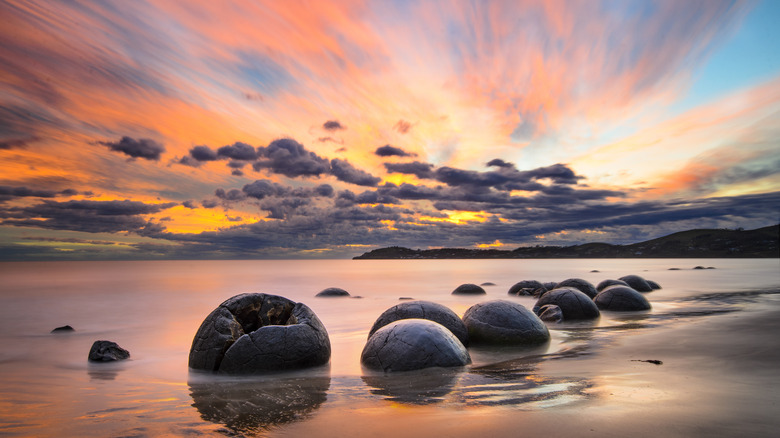22 Strangest Natural Wonders Of The World
Earth is a weird place. We have skyscrapers that kiss the sky and machines that can take us to the bottom of the ocean, but we have yet to discover everything our big blue planet has to offer. Some of what we have found, though, is pretty extraordinary. The most impressive wonders of our world tend to be popular travel destinations, but you may not have heard about some of the more bizarre feats of nature. These strange natural beauties are no less wondrous and may be even a little more magical.
The same science that helps build those buildings that touch the clouds also provides explanations for some of Earth's creations. While we have a lot of answers for why Earth is the way it is, even more questions remain. Some of the most beautiful things the world has to offer remain a mystery and even those we do know of are no less awe-inspiring. From ancient formations and amazing phenomena to otherworldly landscapes, these strange, naturally occurring wonders are evidence of our world's magic.
1. Jervis Bay's bioluminescent waves in Sydney, Australia
The beach at night has a totally different vibe than during the day. You typically will have a tough time seeing the waves crash unless it's a full moon, but there are a small number of coasts that have self-illuminating waves. Australia's Jervis Bay is one such place, where under the right conditions beach goers can witness a striking blue glow as the waves come to shore.
Jervis Bay has a large number of bioluminescent algae wash ashore that can sometimes make the incoming waters glow a bright blue. While you can't always see them, the glow-in-the-dark blue is worth waiting for a night when the sky is dark and the water is warm.
2. Rainbow Mountains in Zhangye Danxia National Park, China
No two mountains are the same, and whether they are snow-capped or covered in evergreen, their beauty is obvious. The mountains in China's Zhangye Danxia National Park may have neither of these traits, but their range of color sets them apart in a big way. The Rainbow Mountains are true to their name and naturally display a wide range of colors.
The striped colors coat the mountains throughout and are a result of layers of sediment settling over the course of millions of years. Though we know now what gives them the brilliant coloring, ancient peoples probably thought they were painted by the gods. They look just like a massive paint palette, and the Instagrammable destination makes for a great photo.
3. Kawah Ijen Volcano in Java, Indonesia
Volcanoes are already pretty high on the list of most terrifying natural disasters, but your run-of-the-mill molten lava has nothing on Kawah Ijen Volcano's blue fire. The bold blue lava and flames are products of intense heat and a large concentration of sulfur. Neon blue lava is certainly an odd way to light up a night on Indonesia's island of Java.
A different shade of blue can be found on Kawah Ijen Volcano in the form of a lake. The almost seafoam-colored caldera is gorgeous but highly acidic. You may not be able to dip your toes in, but you can visit and look upon the beauty from a distance.
4. Sailing Stones in California's Death Valley National Park
Death Valley, despite its sinister name, contains some of the most beautiful landscapes of the national parks. Spots like Badwater Basin and Artist's Drive will make you feel as though you've entered another world, but one area is home to a pretty peculiar feature. Racetrack Playa contains stones that seem to have their own engraved path across the desert flatland.
The varying-sized stones and their trails had mystified onlookers until the movements were caught on a time-lapse video in 2014. Apparently, weather conditions have to be just perfect to get the stones moving. A combination of wind and ice propels the stones forward, scraping the dry ground as they go.
5. Hoh Rainforest in Washington's Olympic National Park
Rain sometimes gets a bad rap, but it's not all soggy socks and mud puddles. Washington's high rate of rainfall has given birth to one heck of a majestic forest. Hoh Rainforest in Olympic National Park is what your fairy dreams are made of, with seas of ferns and trees covered in fuzzy moss.
The viridescent landscapes here can be seen via several trails, including the Hall of Mosses, an easy hike that includes some pretty awesome views of draping vegetation. This is one green wonderland you may not mind getting lost in, just don't go making any bargains or jumping into fairy rings!
6. Pamukkale Thermal Waters in Hierapolis, Turkey
Thermal pools all over the world are popular destinations for travelers looking to unwind. While the natural jacuzzis are one of Mother Earth's most luxurious gifts, some are pretty easy on the eyes as well. The Pamukkale Thermal Waters in the ancient city of Hierapolis are on another level. Not only did they make the city a hotspot for spa activities thousands of years ago, but travelers still dip their toes in the waters here today.
The stark white color of the rocks that make up the pools is the result of mineral deposits and petrified cascades of water. These formations are in perfect harmony with the blue, heated waters.
7. Waitomo Glowworm Caves in New Zealand
As every '80s or '90s kid can attest to, there's nothing more comforting than a ceiling full of glow-in-the-dark star stickers. While nothing is stopping an adult from recreating this look, a cave in New Zealand really blows your childhood bedroom out of the water. Waitomo Glowworm Caves is home to thousands of native glow worms who earn their name, lighting up the interior of the cave with their bioluminescence.
It's not every day you see the night sky recreated underground. However, a boat ride through these otherwise dark caves will have you feeling as though you are stargazing in the wide open.
8. Richat Structure in Mauritania's Maur Adrar Desert
If you're looking for natural wonder that looks like it's straight out of a fantasy film, look no further than the Eye of the Sahara. Officially referred to as the Richat Structure, this massive geological landmark is a collection of rings that give it the appearance of a detailed eyeball. The flat, almost monochromatic desert that surrounds it makes the layered structure stand out starkly.
There are a few theories of how the Richat Structure was formed, but a concrete cause has not been deduced. Whether erosion, tectonic activity, or another culprit is behind the desert marvel, a trip to Mauritania to see the structure is a once-in-a-lifetime adventure.
9. Uyuni Salt Flat in Bolivia
Bolivia is home to the largest salt flat in the world, but it's not just Uyuni Salt Flat's size that makes it an unofficial world wonder. The beauty of the barren landscape goes on for 4,000 square miles and is a striking sight the whole way.
Wide open skies are always pretty impressive, but Uyuni Salt Flats can make it seem like the sky is limitless. When the flats get flooded with a thin coating of water, a mirror effect is created that reflects the sky. The result is trippy and makes for one amazing souvenir photo. Stay at the nearby salt hotel to watch the sun rise and set over the massive flatland.
10. Great Blue Hole of Belize
There is so much we don't know about the ocean, with over 80% of its vastness unmapped and unseen. What we have seen, though, is pretty amazing. Belize's Great Blue Hole is a reminder of how glorious and monumental the sea can be.
The massive sinkhole is a popular yet dangerous dive site, with divers exploring the surrounding area and inside the Great Blue Hole itself. Believed to once be a prehistoric cave, stalactites and unidentified tracks can be found at the very bottom. As a part of the Belize Barrier Reef Reserve System, the natural wonder is a World Heritage Site and has been determined to be of great global importance and value.
11. Marble Caves of Patagonia in Chile
Patagonia is one of the most beautiful chunks of this Earth. Its biodiversity, large glacier fields, and floral landscapes are all worth an in-person look, but Chile's Marble Caves offer something totally different. The swirling caves are the perfect example of how water and earth can come together and create something truly wondrous.
The smooth, curvaceous formations within the caves certainly add to their beauty, but it's the collection of colors that steal the show within. Marbled layers of soft shades of blue, pink, and yellow can be seen throughout as visitors float around formations via boat. The same waters that travelers traverse here helped create the impressive columns and structures over millions of years.
12. Caño Cristales in Colombia
Also known as Colombia's Rainbow River, Caño Cristales offers visitors some bold eye candy. The river has high clarity that reveals the vibrantly colored plant life that grows underneath the water. Macarenia clavigera, an aquatic plant, is responsible for the crimson, yellow, blue, and green colors that give it its rainbow nickname.
The natural beauty of Caño Cristales is undeniable, and the phenomenon isn't found anywhere else. The Macarenia clavigera is native to only Colombia, so the river can not be recreated. Even if it could be, though, the biodiversity and surrounding Andes Mountains would still set the Rainbow River apart.
13. Lake Retba in Senegal
There are a handful of pink lakes around the world that are worth a visit, one of which is Lake Retba in Senegal. The color comes from a specific breed of bacteria that thrives in high-salinity lakes, and this rosy destination is one of the saltiest lakes in the world.
It's not uncommon to see salt harvesters walking in the waters of Lake Retba pulling salt from the bottom of the lake. The shores are laden with heaps of the collected pink salt and the wooden canoes used in the process.
14. Ko Tapu in Thailand's Ao Phang Nga National Park
Appearing to defy gravity, this top-heavy sea stack is one of the most iconic in the world. Its skinny base holds up some massive, towering weight, and the unique shape makes the sea stack globally recognizable. This recognition is only strengthened by its appearance in the James Bond film "The Man with the Golden Gun," which has given its home island the nickname James Bond Island.
The limestone formation has been eroded over time by the sea, giving it its nail-like shape. Without human intervention, the towering landmark will one day erode so much that it falls, so see this wonder while you still can.
15. Playa del Amor in Mexico's Marietas Islands National Park
Commonly referred to as Mexico's Hidden Beach, Playa del Amor is one of the coolest beaches you'll likely ever visit. Now a popular tourist destination, the tucked away cove is its own oasis of sandy beach. It's only accessible when the tide is low, as beachgoers must enter through a relatively low cavern opening. Access is limited, and you need a permit to visit.
The hidden nature of the spot is very cool, but Plays del Amor's obvious draw is the gaping hole in the ceiling of an otherwise encased rock formation. The huge skylight gives the beach plenty of natural light and a pretty amazing visual.
16. Rainbow eucalyptus trees of Hawaii
No one does color better than Mother Earth, and she really outdid herself when she created the rainbow eucalyptus tree. This species of eucalyptus is only found in a handful of places, typically found in places with heavy rainfall. An underrated Hawaiian attraction, the rainbow eucalyptus is a gorgeous addition to the already colorful flora and fauna of the area.
The rainbow colors of the vibrant tree become visible when it sheds its bark, as a layer of green begins to peek through. As the exposed part of the tree ages and more strips of bark are stripped away, other hues come into play. This makes older trees all the more beautiful.
17. Spotted Lake in British Columbia, Canada
Those with trypophobia should probably avoid this bizarre wonder. Spotted Lake in British Columbia displays an odd pattern when the thick ice begins to melt. Polka dots of varying sizes start appearing on the lake's surface as temperatures rise and evaporation takes place.
These spots are a lovely bouquet of muted greens and yellows, standing out against the surrounding white ice. Spotted Lake is considered sacred to local Indigenous people, and it is protected. Stick to admiring the lake from afar — it's still worth a visit!
18. Lake Baikal in Russia
As far as large bodies of water are concerned, oceans typically get all the credit. There is one lake, though, that deserves some major recognition. Lake Baikal in Russia is massive in both depth and surface area. And thanks to its location on a rift, the major lake is always growing.
It's not just the lake's size, or even the fact that it's the oldest lake in the world, that makes Lake Baikal a wonder. It also has some of the clearest water and ice in the world, which makes looking into the freshwater lake almost like peering into a window. Along with this clarity, the unevenly freezing ice gives the lake the appearance of a field filled with large jewels and crystals.
19. Aurora Australis in Tasmania
You've heard of the Northern Lights, but do you know her southern sister? The Aurora Australis is the near twin of the Aurora Borealis, both phenomena that occur in the sky as a massive light show. Tasmania is one of the best places to see this beauty of the Southern Hemisphere.
The lights have mesmerized those who have seen them, and people come from all over the world to catch a glimpse. The sisters are born from the same cause of charges in the air interacting with the atmosphere. The Aurora Australis has a larger concentration of pink hues than the Northern Lights, though green, blue, red, and purple colors commonly add to the show.
20. Hạ Long Bay in Vietnam
Vietnam has some truly amazing beaches and coasts, the most iconic of these probably being Hạ Long Bay. With over 1,000 limestone towers that jut out of the gorgeously green water, the landscape of the bay is a feast for the eyes.
The bay has been shaped and transformed over the course of 200 million years, making the air of ancestry strong here. A great way to see this aquatic marvel is by junk boat. Tours via the dramatic sailing ships are a great way to combine culture with breathtaking views.
21. Giant's Causeway in Northern Ireland
Ireland's rocky coasts have been featured in so many films and TV programs that you are likely already familiar with their towering seaside cliffs. While the Cliffs of Moher and other similarly dramatic and sprawling landscapes are iconically Irish, you may have never heard of the island country's strangest rock formations. Giant's Causeway may not be superior in elevation, but its cube-shaped rocks are a more subtle wonder.
Giant's Causeway looks like the world's best laid-out Tetris game, with seemingly endless rows and columns of almost perfect cubes. The boxy formation is the result of long-ago volcanic activity, but legends that it was a road for giants lent the collection of brick-like rocks its name.
22. Moeraki Boulders Beach in New Zealand
Speaking of weirdly shaped beach rocks, New Zealand's spherical boulders give the Irish cubes a run for their money. Giants could again be used to explain these massive rock balls away, but there is a more scientific explanation here as well. The balls are thought to be concretions, or a very compacted heap of minerals formed over the course of millions of years.
There are dozens of these boulders at Moeraki, which is enough for a few games of marbles for some hypothetical ancient giants. It's free to visit the beach and see these odd creations, but note that they are protected, and you can not leave with any ill-gotten souvenirs.
